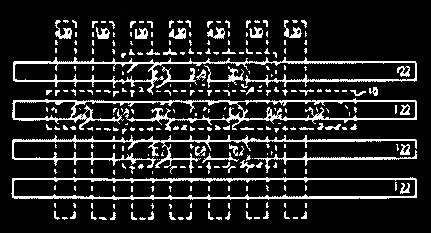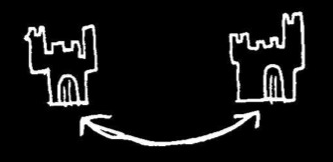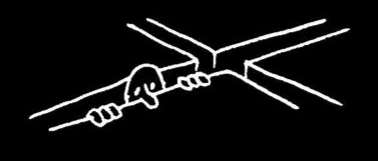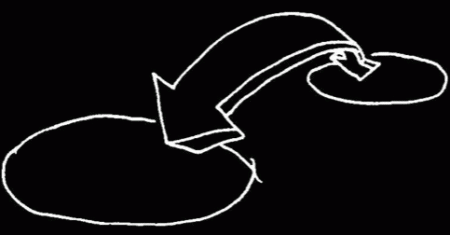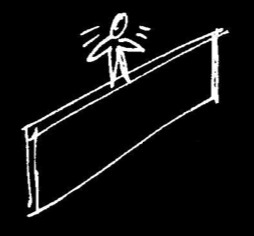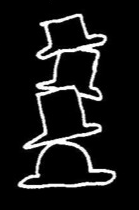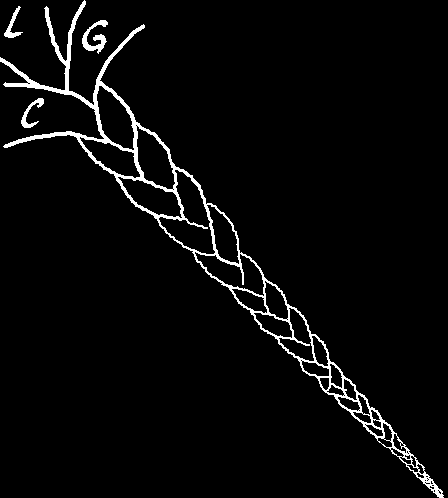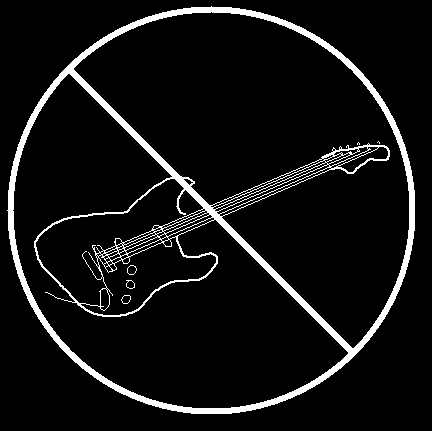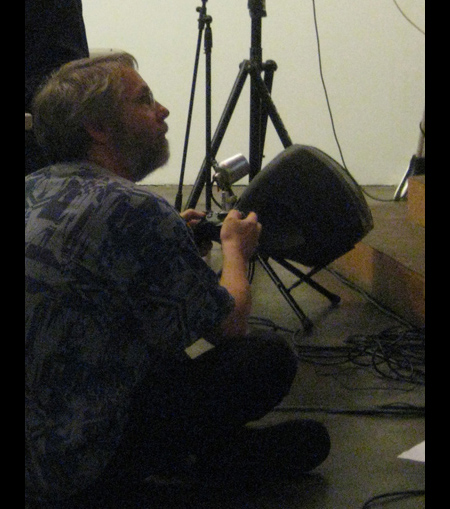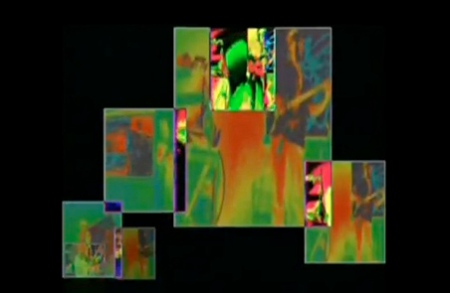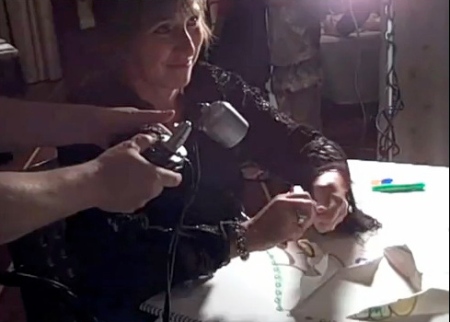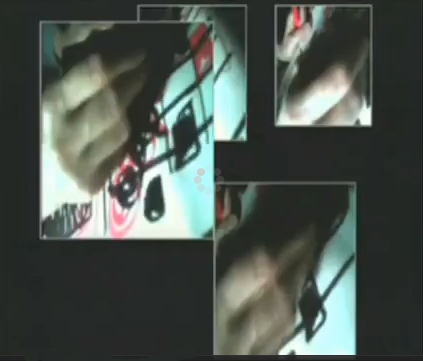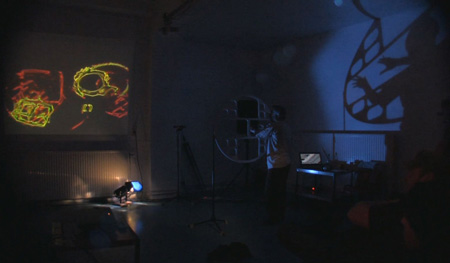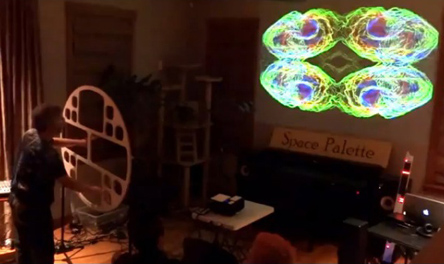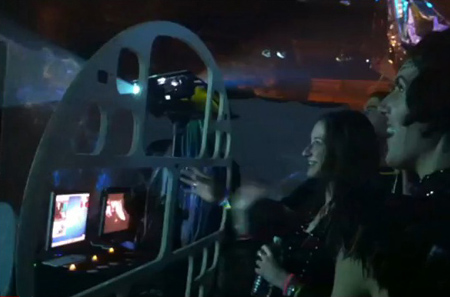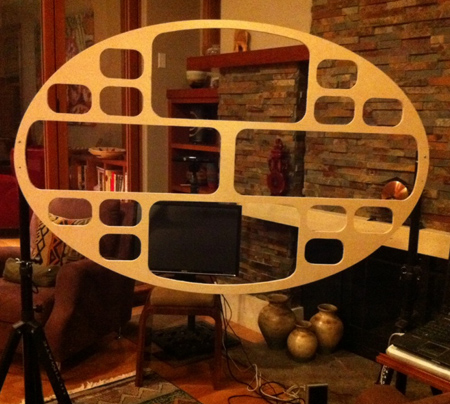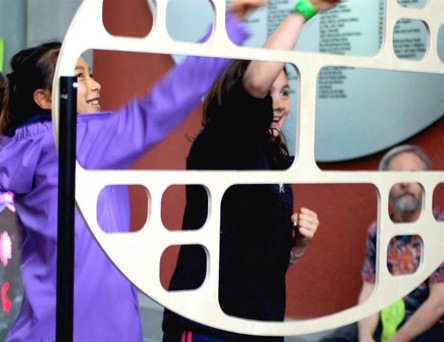Or, how to avoid “vuzak fatigue” = the audience ignoring the visuals.
This is a followup to a discussion last summer between myself, Tim Thompson, and David Tristram. David got things started by defining the problem:
dt> The audience ignoring the visuals. This is central to my frustration with visual performance and must be solved if we are to succeed.
My response was to dig up my old PIPs metric for visual performance. I claimed that one reason audiences preferring the triggering and mixing of pre-recorded visuals (common “VJ” style), or synchronous computer generated images (algorithmic slaves, “music visualizer” style), was because the manual performers were several orders of magnitude too slow to be interesting in a purely generative schema. Compared for instance with musicians and other fast input performers.

dt> PIPS is useful but is a very narrow metric.
Well, David is right, PIPs is a very narrow metric — by itself. But, when you add two other narrow metrics, then you get … narrowness compounded? Or, if lucky, a rigid framework which is useful just because it is definable. When I got my degree in rat psychology, I learned that measureable rigid frameworks have their uses, if only to clearly define where you don’t want to go. They can also provide a place to stand from which to get a clearer view of where you do want to go.
In that spirit, I say that, yes, PIPs by itself is a sterile metric, but when you add in AG and MP, then those three axises together define a useful space for visual performance. Or in less grandiose terms, a few things to keep in mind when designing, composing for, and performing with visual instruments.
The axises are Performer Inputs per Second (PIPs) with Air Guitarabilty (AG) in a visual system that has Mistake Potential (MP).

This works as follows:
You have a visual performer initiating very frequent actions (PIPs) which gives enough temporal density to weave engaging graphical patterns in realtime, and the audience knows she’s doing it thanks to AG (Air Guitarability, the visible correlation between performer body movements and changes in the visuals), all within a conventional temporal structure so there can be flow, expectation, surprise, and mistakes (MP).
By “conventional,” I don’t necessary mean old traditions; I simply mean conventions whether new or old which establish structure for the performance. Call it dynamic visual vocabulary, call it time signatures for visuals, call it late for dinner, whatever. Just so the audience has a chance to grok the rules for the visual temporal patterns you’ll be laying down.
Oh shit, there I’ve said it, “rules.” So be it. I’m just an old fart, conservative, straight-ahead, 12 bar graphics guy, so my viewpoint is a bit conventional (literally, conventions — I like ’em)
I think rule-breaking is great in artforms where there are established traditions to contrast with. Rule-breaking in live visual performance may be a bit premature, like making up a new language, not teaching it to anyone else, and then expecting people to appreciate the delightful ways in which you violate the syntax for extra poetic expressiveness. They won’t.
Oh yeah, and about the on-again off-again Visual Richness dimension. Originally not there, then yesterday I thought I needed it and so put it back in. But then I realized (again, apparently!) that Visual Richness is secondary, an epiphenomenon in the viewer’s perception generated by PIPs and MP. I claim that MP is only possible within a dynamic visual vocabulary of primtives, riffs, and time signatures. Such a visual system, like the music infrastructure (i.e. diatonic scale, notation, time signatures, etc), then supports the emergence of composition. And entertaining richness is simply good composition times speed. Otherwise it’s just visual noise (bad composition) or slow painting (come back when it’s done).
Finally, the excellent post by David that spawned this blog entry:
dt>
Date: Thu, 09 Jun 2011 08:44:16 -0700
From: David T
Subject: Re: "VISUAL MUSIC" a conversation
Excellent discussion fellow voyagers.
PIPS is useful but is a very narrow metric. I would posit a single mallet hit on a tubular bell performed at the correct instant can rival a Steve Vai solo. Or a haiku compared with "War and Peace". Or Cage strumming a piano harp with a feather. Or meeting someone's eyes. All summer in a day, or a moment.
The audience ignoring the visuals. This is central to my frustration with visual performance and must be solved if we are to succeed. It's the environment and expectations commonly associated with live performance that make it difficult to showcase visual performance. The solution is using an environment tailored to visual performance. We have them, key examples being movie theatres and opera.
For our smaller events, say like in Daev's garage, simple steps should be taken. Turn down the lights. Have the musicians face away from the audience and toward the screen. Have the video fall to black between compositions.
The above reveals my bias toward the artifact, not the act of creation. Ultimately, the experience of the observer is the critical event, and the main part of that happens between the screen and the observers eyes. However, personally, I am interested in visual (and musical) experiences that are not the same every time. That's why I like live music, and especially improvisational performers like the Dead. I believe live, improvisational, collaborative visual performance is exciting, beautiful, enlightening, and transformational.
Let's do some of that.
